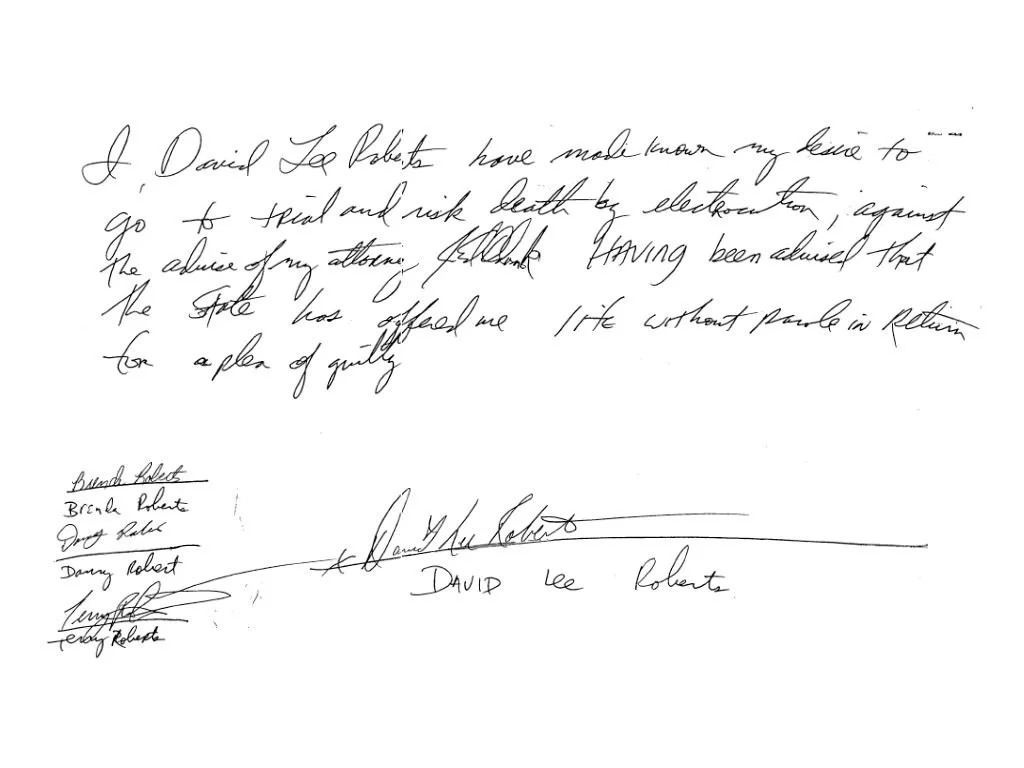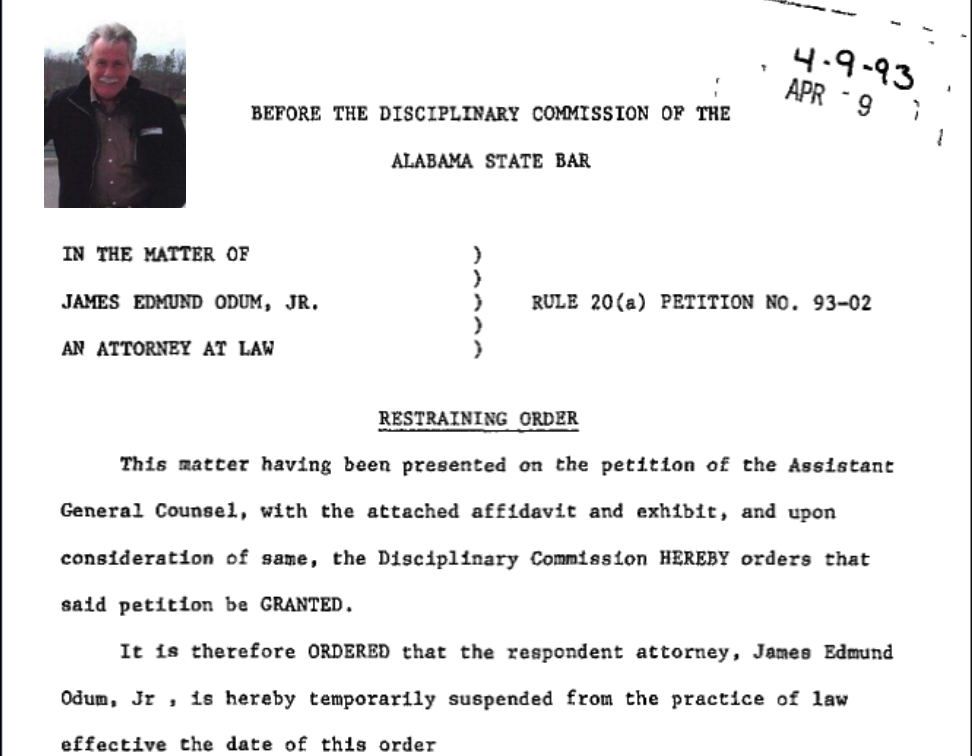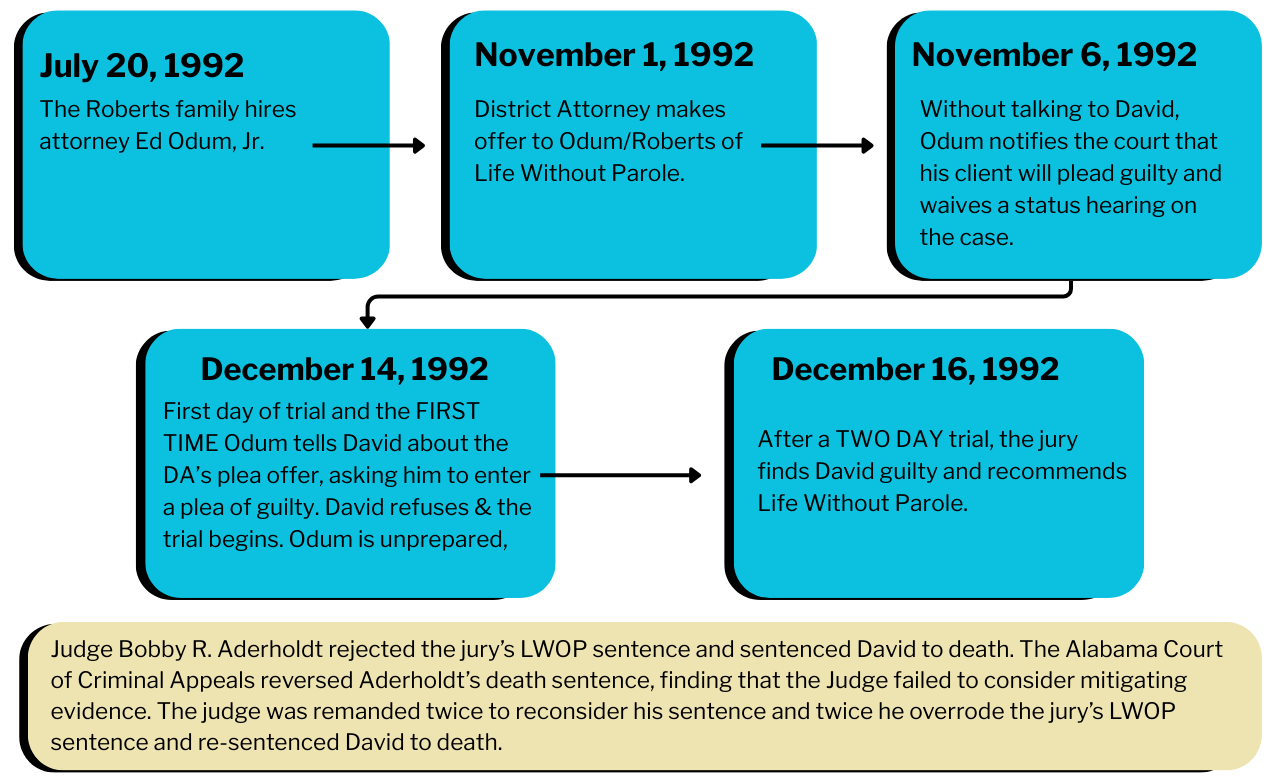Repeated, prolonged interrogations of Mr. Roberts, a mentally ill suspect, predictably result in a confession.
Prolonged Interrogations & Confessions
Mr. Roberts’ statements were made after long periods of police questioning – beginning with a three hour interrogation in Investigator Cox’s official vehicle on the evening of April 22, 1992 and culminating in more than 25.5 hours of questioning without legal counsel. After Mr. Roberts provided an initial, exculpatory statement, police transported him to the Marion County Sheriff’s Department, for a second interview. The authorities released Mr. Roberts sometime after 2:00 a.m on April 23, 1992.
Interrogation Timeline
-
April 23, 1992
Investigator Mays administered a polygraph test to Mr. Roberts beginning shortly after 12:30 p.m.
-
April 23, 1992
By 4:00 p.m., Mr. Roberts was being taped as he made incriminating statements.
-
25.5 Hours into Questioning
Investigator Mays returned to Mr. Roberts again and again until — 25 ½ hours after questioning started — Mr. Roberts had made provided multiple, conflicting statements implicating himself for murder, robbery, and arson.
-
Initial Statement
Mr. Roberts’ initial statement on April 23, 1992, suggested that, acting under Satterfield’s express instructions, Mr. Roberts killed Ms. Jones and attempted to burn the residence to protect his own family from Satterfield’s threats.
-
Satterfield's Hold Over Roberts
Mr. Roberts explained that, “he was real scared because Satterfield told me the night before that my dad was ‘going down.’” Mr. Roberts also informed the officers that – to protect his family – he took a number of guns from the Satterfield residence after the shooting and hid them in the woods. Mr. Roberts took investigators to the location of the stashed weapons, where they were recovered.
-
Second Statement
Mr. Roberts stated that Mr. Satterfield, on April 21, had told him to kill Ms. Jones and had threatened to kill his family if he did not comply. Mr. Roberts elaborated how Mr. Satterfield played on his anger and promised Mr. Roberts women and money.
-
Third Statement
In this statement, Mr. Roberts explained that before he shot Ms. Jones, he took $143.00 out of her billfold.
-
Mr. Roberts' Father Threatened by Satterfield
Mr. Roberts stated that on the night of April 21, 1992, Mr. Satterfield was drunk and was holding a .357 magnum and, referring to Danny Roberts, said “he’s going down, he shouldn’t have turned against us.” Mr. Roberts understood this to mean a direct threat against his father.
-
Final Statement
Mr. Roberts told the investigators that he attempted to burn Satterfield’s home because of Satterfield’s overt threats toward his father, Danny Roberts. With respect to the murder of Ms. Jones, Mr. Roberts stated that “[he] did not know why he shot her.”
Legal Representation
After his arrest, Mr. Roberts, who was indigent, was at first represented by the appointed Winston County public defender, Samuel L. Masdon. Straight away, Masdon filed a motion to have Mr. Roberts psychiatrically evaluated. Mr. Roberts’ brother, Terry, argued over defense strategy. To appease his family, David terminated Mr. Masdon soon after that and he withdrew. Mr. Roberts’ family, managing on limited financial resources and under sever pressure, retained attorney Ed. Odum, Jr. for his defense.
Unprepared – and later suspended by the Alabama Bar Association – David’s lawyer failed to present a plea deal from the State or to mount a proper defense in his case.
Attorney Failures Timeline
Ed Odum, Jr. was retained by David’s family in July 1992. Unconvinced this was a capital case, the District Attorney presented Odum with a plea offer of Life Without Parole on or about November 1, 1992. On November 6, 1992, without informing David of the DA’s offer, Odum informed the court that David will enter a guilty plea and excused himself from a status hearing on the case. Odum willfully neglected to discuss the DA’s offer with his client until the first day of trial, December 14, 1992 when he asked David to enter a guilty plea. Unaware that this guilty plea meant he would receive a sentence of Life Without Parole and not a Death sentence, and increasingly paranoid and mentally unstable, David refused to plead guilty and the case went to trial.
Unprepared for Trial
Odum was unprepared to try the case; prior to trial he conducted no investigation, hired no experts, and failed to have David’s mental health evaluated – because he believed, incorrectly, that David was not entitled to a court-ordered mental health evaluation. He prepared no witnesses, failed to adequately challenge David’s confessions, and during the course of his representation filed only two documents with the trial court: a motion for discovery and a motion to continue.
On December 16, 1992 – after only TWO DAYS of trial – the jury found David Lee Roberts guilty and recommended a sentence of Life Without Parole.
1993 – Attorney Ed Odum, Jr. is Suspended Twice by the Alabama Bar Association
While Odum accepted payments from David’s family to represent him, his legal career was in shambles, as he was being pursued by the Alabama State and Birmingham Bar Associations for serial misconduct in other cases. As his disciplinary records reflect, before and after being retained to represent David, Odum habitually defrauded clients by taking their money to do no substantive legal work. Charged with several rules violations and suspended twice, Odum eventually lost his law license. As a result of these disciplinary actions, Odum was not present at David’s sentencing hearing, where the judge overrode the jury’s sentence of Life Without Parole and imposed a sentence of Death.
Court of Appeals Reversal & Re-sentencing
The Alabama Court of Criminal Appeals reversed David's death sentence first because Judge Aderholt improperly excluded relevant mitigating evidence – that he suffered from extreme mental disturbance and was under the substantial influence of another.
At the first re-sentencing, court-appointed attorney Masdon did not call a single other witness or put on any evidence. Unsurprisingly, the court overrode the jury’s 7-5 life verdict and again sentenced Mr. Roberts to death.
On the second go round, Mr. Masdon presented the testimony of Dr. Allen Shealy, a forensic psychologist, who incorrectly chalked up David’s crime (and aberrant behavior before the crime) to habitual, long-term drug use.
In Dr. Shealy’s opinion, David was substantially impaired at the time of the murder and, because of his perception that Satterfield was threatening his family, acted under extreme emotional duress. None of this expert testimony persuaded the judge that David deserved to live and he was once again sentenced to death.





